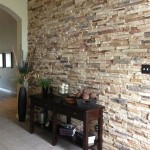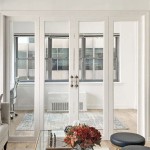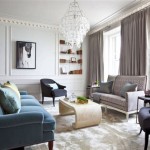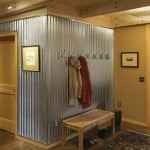How Much Do Interior Designers Charge Per Square Foot?
Understanding the cost structure associated with hiring an interior designer is crucial for any homeowner or business owner embarking on a renovation or decoration project. While various fee arrangements exist, one of the most common and seemingly straightforward methods is charging per square foot. However, the simplicity of this pricing model can be deceptive, as numerous factors influence the final cost. This article explores the intricacies of the per-square-foot pricing model utilized by interior designers, outlining the factors that contribute to the overall expense and providing a framework for understanding the potential investment involved.
The per-square-foot pricing model offers a readily understandable estimate for the design work involved. It provides a scalable approach, where the larger the project's square footage, the higher the design fees. This allows clients to quickly grasp the potential cost implications of expanding or reducing the scope of their project. However, it's vital to recognize that this model typically covers the design services themselves, not the cost of furniture, materials, or construction. Those aspects are usually billed separately or factored into a comprehensive project budget.
The national average for interior design services billed per square foot can vary widely, ranging from $5 to $15 or even higher. Several variables contribute to this range, including the designer's experience and reputation, the complexity of the project, the location of the property, and the level of detail required. In high-cost-of-living areas, such as major metropolitan cities, the per-square-foot rate will naturally be higher than in more rural or suburban locations.
Factors Influencing Per-Square-Foot Pricing
Several key factors determine the per-square-foot rate charged by interior designers. Understanding these influences is essential for interpreting quotes and making informed decisions about the design investment.
Experience and Reputation: Seasoned designers with a proven track record and a strong portfolio often command higher rates. Their expertise in problem-solving, creative solutions, and project management justifies their increased fees. Clients are paying not only for their design skills but also for their experience in navigating the complexities of design projects and executing them successfully. Designers with specialized expertise, such as sustainable design or luxury residential projects, may also charge premium rates.
Project Complexity: The scope and complexity of the project significantly impact the per-square-foot rate. A simple cosmetic update, such as painting and furniture rearrangement, will typically incur lower fees compared to a complete renovation involving structural changes, electrical work, or plumbing modifications. Projects requiring extensive custom design elements or intricate detailing will also necessitate higher fees due to the increased time and expertise involved.
Geographic Location: As previously mentioned, the cost of living in a particular area directly influences interior design rates. Designers in major cities with high overhead costs and competitive markets will generally charge more than those in less densely populated areas. The demand for design services in a particular location can also affect pricing.
What's Included in the Per-Square-Foot Fee?
It's imperative to understand precisely what services are encompassed within the per-square-foot fee. Clarity on this point prevents misunderstandings and ensures that the client receives the expected level of service. While the specific inclusions may vary from designer to designer, certain core services are typically included.
Initial Consultation and Space Planning: The initial consultation usually involves discussing the client's vision, needs, and budget. The designer will assess the space, take measurements, and gather information to develop a design concept. Space planning involves creating floor plans and layouts that optimize functionality and flow within the space.
Design Concept and Development: This phase entails developing the overall design concept, including the style, color palette, and materials. The designer will present mood boards, sketches, and preliminary drawings to illustrate the proposed design. This stage often involves multiple revisions and refinements based on client feedback.
Material and Finish Selection: Selecting appropriate materials and finishes is a crucial aspect of interior design. The designer will guide the client through the process of choosing flooring, wall coverings, lighting fixtures, hardware, and other decorative elements. They will consider factors such as aesthetics, durability, budget, and maintenance requirements.
Furniture and Accessory Selection: The designer will assist in selecting furniture, artwork, and accessories that complement the overall design scheme. This may involve sourcing items from various vendors, negotiating prices, and coordinating delivery and installation.
It's important to note that while some designers will handle project management duties, others may charge a separate fee or hourly rate for this service. Project management involves overseeing the execution of the design plan, coordinating with contractors, and ensuring that the project stays on schedule and within budget. Similarly, procurement services, such as ordering and tracking materials, may be billed separately.
Alternative Fee Structures: Beyond Per-Square-Foot
While the per-square-foot model is common, it's not the only fee structure employed by interior designers. Understanding alternative pricing methods allows clients to compare offers and choose the structure that best aligns with their project and budget.
Hourly Rate: This approach bills the client for the designer's time spent on the project. Hourly rates vary depending on the designer's experience and location. This method can be suitable for smaller projects or when the scope of work is uncertain.
Fixed Fee: A fixed fee covers all design services for a specific project. This provides cost certainty for the client, but it requires a clearly defined scope of work upfront. Fixed fees are often used for projects with a well-defined scope and a predictable timeline.
Cost-Plus: In this arrangement, the designer charges the client the actual cost of goods and services, plus a percentage markup. This method offers transparency, but it can be difficult to predict the final cost accurately. Cost-plus agreements are sometimes used for projects involving extensive custom work or unique materials.
Percentage of Project Cost: Some designers charge a percentage of the total project cost, including materials, labor, and furnishings. This method aligns the designer's incentives with the project's success, but it can be expensive for larger projects.
When evaluating different fee structures, it's crucial to consider the project's scope, complexity, and the client's budget. There is no one-size-fits-all solution, and the best approach will depend on the specific circumstances.
Ultimately, determining how much interior designers charge per square foot, or through any other fee structure, necessitates thorough research, clear communication, and a detailed understanding of the services involved. Selecting the right designer and pricing model is a critical step in ensuring a successful and satisfying design experience.

Interior Designer Cost Fees Fixr

Decoding The Interior Design Cost Per Sq Ft For A 3bhk In Mumbai Understanding Work Hipcouch Complete Interiors Furniture

Interior Designer Cost Fees Fixr

Interior Design Cost Per Square Foot In Factors To Consider

Interior Designer Cost Fees Fixr

Interior Design Cost Per Square Foot In Factors To Consider

How Much Interior Design Cost In Mumbai Designcafe

How Much Does It Cost To Hire An Interior Designer

How Much Does Interior Design Cost Octane Seating

Interior Designer Cost Fees Fixr
Related Posts








